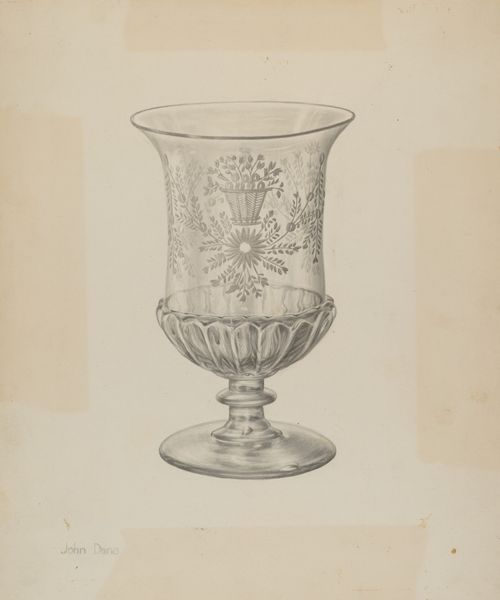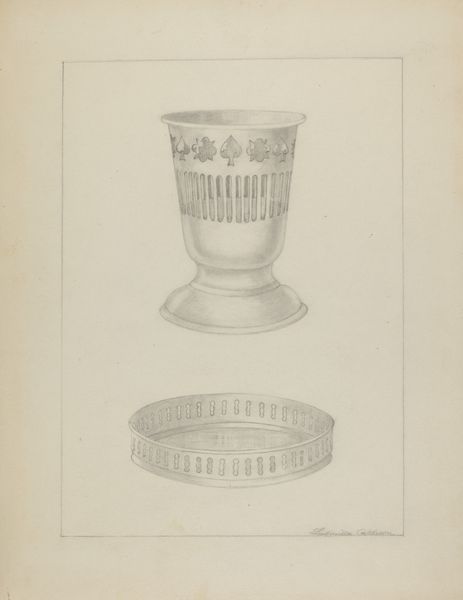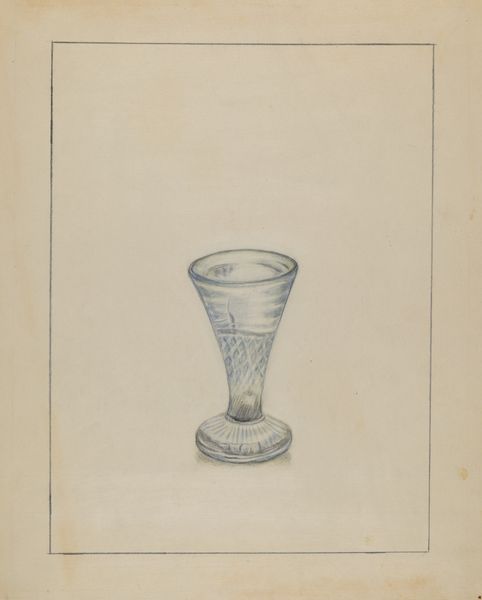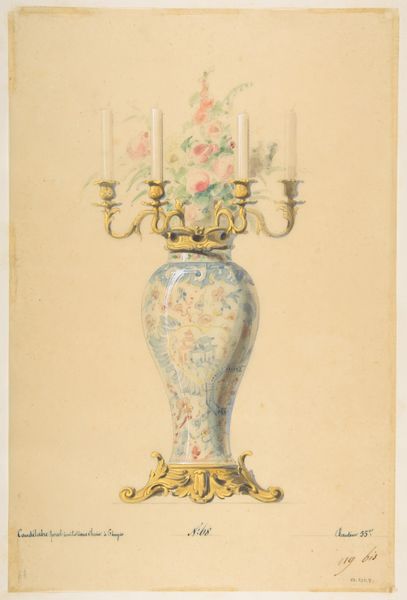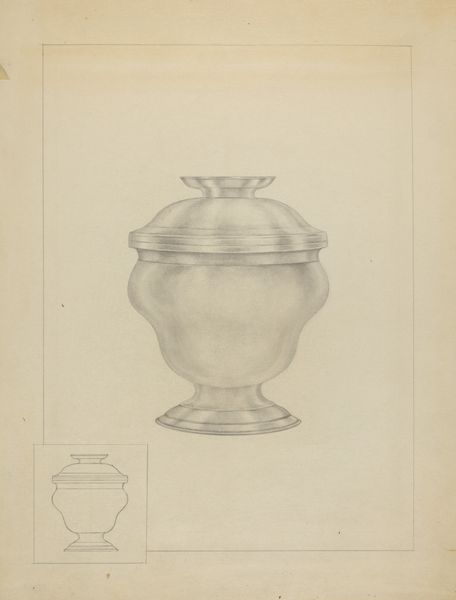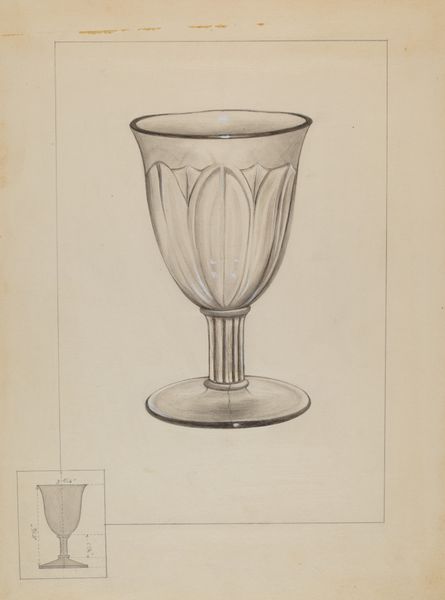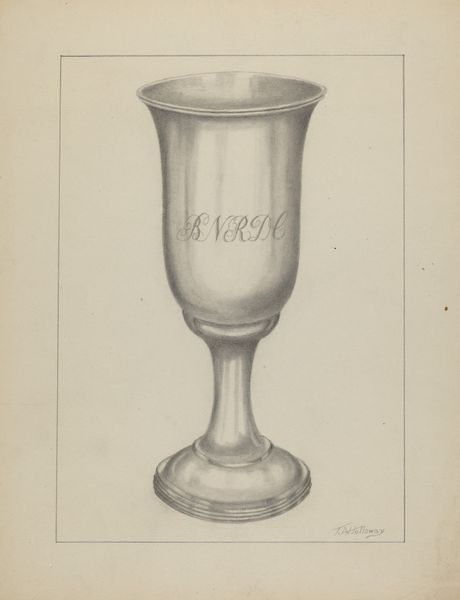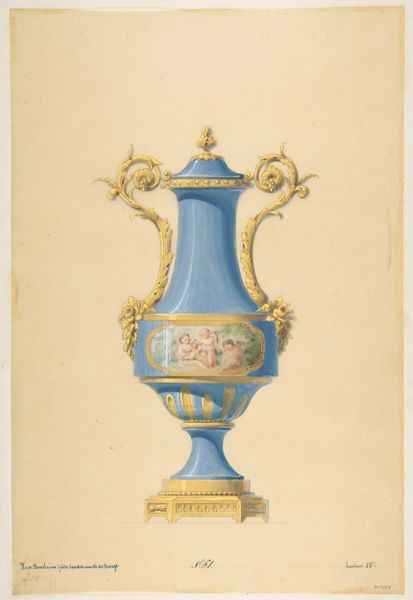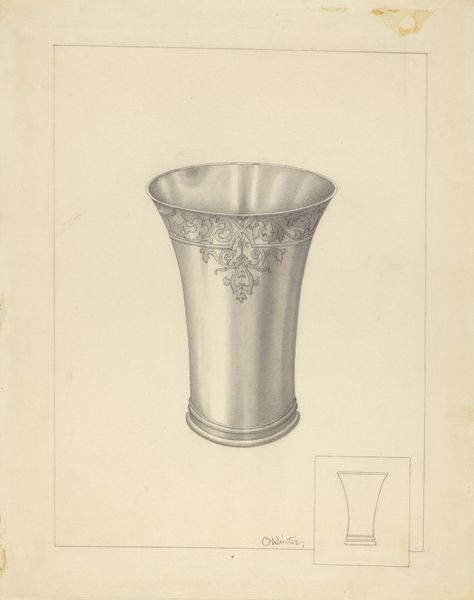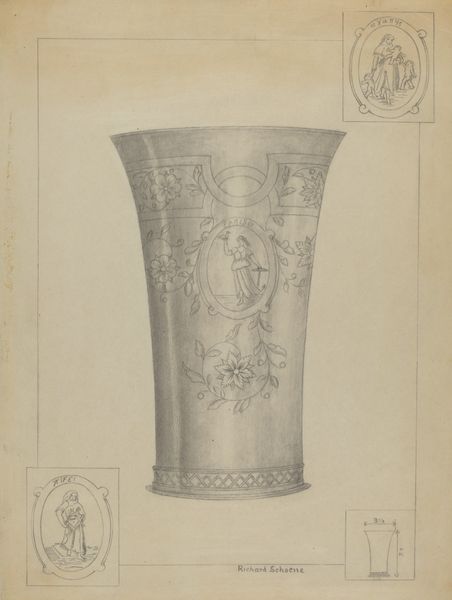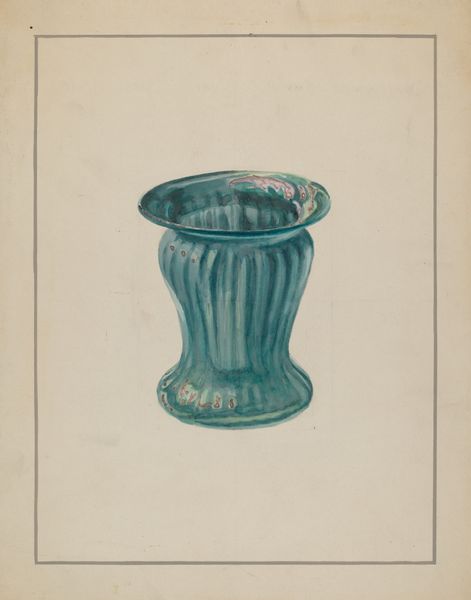
drawing, coloured-pencil, watercolor
#
drawing
#
coloured-pencil
#
water colours
#
watercolor
#
coloured pencil
#
academic-art
#
watercolor
Dimensions: overall: 30.5 x 22.9 cm (12 x 9 in.)
Copyright: National Gallery of Art: CC0 1.0
Editor: So, here we have Francis Law Durand’s "Fire Lighter Vase," created sometime between 1935 and 1942. It looks like it was made with watercolor and colored pencils. I am really intrigued by how delicate and idealized the vase seems. What's your read on this piece? Curator: Well, I see more than just a delicate vase. Think about the era – the '30s and '40s, a time of immense social upheaval, of both economic hardship and rising totalitarianism, contrasted against a seemingly utopian vision presented on the vase. I question the purpose of this escapism? Why design a vase depicting idyllic scenes when the world outside was in turmoil? How does the artist engage with the politics of the era? Editor: That’s a really interesting point. I hadn’t considered the vase as a potential form of escapism. It makes you wonder what its function really was. Curator: Exactly! Was it simply decorative, intended for a privileged class seeking refuge from reality? Or could it also represent a form of resistance – a visual assertion of beauty and hope amidst darkness? Consider the accessibility of fine art: who typically engaged with this kind of work during the time? And how does this inform our understanding of it now? Editor: It's almost a commentary on class and access. But perhaps also a dream, of how things *could* be. Curator: Precisely! It's the tension between reality and aspiration that makes it so compelling. Do you notice anything about the images chosen for the vase? What do these choices emphasize, and what are they intentionally omitting? Editor: Now I see it! It’s like the vase becomes a stage for larger narratives about society. It encourages us to think more critically about the world around us. Curator: Agreed! And by looking beyond the aesthetic surface, we start to ask fundamental questions about power, privilege, and the role of art in reflecting, reinforcing, or challenging societal norms. Editor: It’s fascinating how a simple image of a vase can open up so many complex conversations. Thanks for helping me look beyond the surface. Curator: It's been a pleasure. Remember, art is never created in a vacuum, and understanding its historical and social context is essential for meaningful interpretation.
Comments
No comments
Be the first to comment and join the conversation on the ultimate creative platform.

